FRIAR 2012
3rd International Conference on Flood Recovery, Innovation and Response
30 May - 1 June 2012
Dubrovnik, Croatia
Introduction
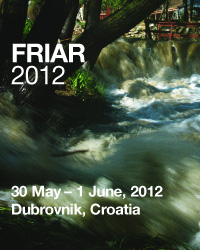
The 3rd International Conference on Flood Recovery, Innovation and Response (FRIAR 2012) has recently taken place at the Inter University Centre in Dubrovnik. The meeting was organised by the Wessex Institute of Technology, UK, represented by Professor Carlos A Brebbia, the University of the West of England, Bristol, represented by Professor David Proverbs and the Politecnico di Milano, Italy, represented by Professor Stefano Mambretti.
The Conference started at the Institution of Civil Engineers in London in 2008 and was reconvened in the Lombardy Region Headquarters in Milano in 2010. It is sponsored by the International Journal of Sustainable Development and Planning and the one of Safety and Security Engineering, and supported by the European Society of Agricultural Engineers and the International Commission of Agricultural Engineering, as well as the International Commission of Irrigation and Drainage. The Conference papers are published in the WIT Transactions on Ecology and the Environment (http://library.witpress.com/pages/listbooks.asp?tid=4).
The occurrence of floods is the most frequent amongst all natural disasters globally. In 2010 alone, 178 places were affected by floods. Losses in exceptional years such as 1998 and 2010 can exceed $40 billion. In 2010-11, destructive floods occurred in Pakistan, Queensland, Australia, South Africa, Sri Lanka, the Philippines, Brazil, Japan and the USA. On average over the three decades, more than one hundred million people each year have been affected by floods. The number of people affected has grown since 1950 from around four million a year to the present level, which represents more than 1% of the global population.
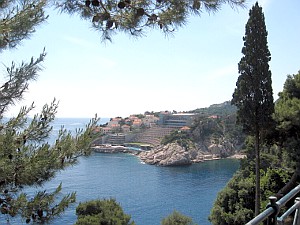
Flood risk is seen to be increasing worldwide as a consequence of climate change, rapid urbanisation and warming seas leading to sea level rise. The close link between rivers and coasts and human prosperity has led to human settlement patterns that have many major cities and other urban areas exposed to regular or occasional flooding. Recent population growth has meant that urban areas have expanded massively. Urban development has frequently proceeded without consideration of flood risk. Between 1950 and 2000 the urban population almost quadrupled to just less than three billion. Over half the world population is now resident in urban settlements, by 2025 some estimate that two thirds of the population will live in cities and towns, ie more than four billion individuals, 90% of them in developing countries. This has resulted in an increase in the population and associated buildings and infrastructure at risk from flooding. Increased wealth has also lead to an increase in the number of properties exposed to flood hazard. As a result the insured losses from flood events continue to grow and will do so for the foreseeable future even without the predicted increase in flood hazard.
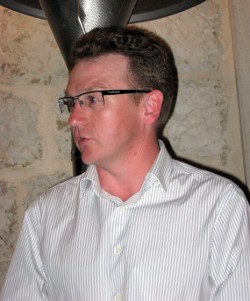
The conference was opened by Professor Carlos Brebbia, Director of the Wessex Institute of Technology (WIT) who referred to the importance of the meeting as part of the objectives of WIT, ie the dissemination of knowledge at an international level.
Carlos mentioned that all papers presented at WIT meetings are published in digital and paper formats and archived in the WIT library (http://library.witpress.com/) where they are easily available to the international scientific community. This gives a very wide dissemination to the work of the Conference. In addition the proceedings are routinely indexed.
The conference provided a forum for researchers, academics and practitioners actively involved in improving and interchanging knowledge and expertise in a wide range of technical, social and economic issues related to the broad theme of flood recovery, innovation and exposure.
Conference Topics
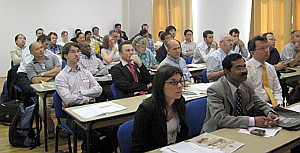
- Flood Risk Management
- Flood Risk Vulnerability
- Emergency Preparedness and Response
- Flood Frequency
- Flood Case Studies
Special Session
A special sessions was organised by Dr J Lamond, University of West of England, on the topic of ‘Response to Reduce Vulnerability to Flooding’ which include the following presentations:
- Three times in enemy action - flood experiences and flood perceptions
- A framework for participatory assessment of vulnerability of commercial property values to flooding in the UK
- Sustainable flood measures, informal knowledge and the development of community resilience to future flood risk
Keynote Address
A special keynote address was given by Dr Robin Bloch, Principal Consultant and head of the Planning Unit at GHK Consulting, London. He has over 20 years of international experience in Africa and Asia and is a Visiting Professor at the University of Witwatersrand and Research Fellow at the University of Cape Town.
Dr Bloch has recently produced a Guide to Integrated Urban Flood Risk Management for the 21st Century, together with Abhas Jha of the World Bank and Jessica Lamond from the University of the West of England.
His talk focussed on the material in the new book which deals on how to manage the risk of floods in a rapidly transforming urban environment and changeable climate. The Guide serves as a primer for decision and policy makers, technical specialists, government officials and concerned stakeholders.
Its guide starts by outlining the key areas and comprises guiding policy principles for integrated flood risk management. It consists of seven chapters:
- Understanding Flood Hazard
- Understanding Flood Impacts
- Integrated Flood Risk Management: Structural Measures
- Integrated Flood Risk Management: Non-Structural Measures
- Evaluating Alternative Flood Risk Management Option
- Implementing Integrated Flood Risk Management
- Promoting Integrated Flood Risk Management
The guide is supported by a website: http://www.gfdrr.org/gfdrr/urbanfloods which contains additional resources related to its content.
Social Occasions
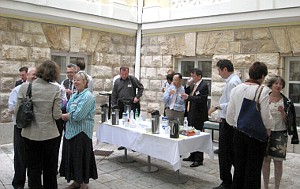
The delegates were offered a guided tour of the old city of Dubrovnik at the end of one afternoon. The City of Dubrovnik, or Ragusa to give it its ancient name, started as a refuge against the Slavic invaders who destroyed the Roman settlements along the coast. This took place in the 7th century and two hundred years later the inhabitants were able to resist a Saracen siege that lasted longer than one year. Over the next few centuries it was to become an important trading centre linking east and west, and becoming part of the Venice Republic for nearly 150 years.
It was in the 15th century that the Republic of Ragusa developed as an independent country and extended its control on the surrounding regions, a position that they were able to keep by skilful diplomacy, balancing the interests of Europe, particularly of Venice and the Ottoman Empire.
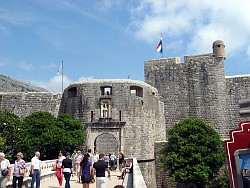
It was only recently that Dubrovnik became part of Croatia, following the disintegration of Yugoslavia. Although the city was bombed during the related hostilities it has now been totally rebuilt and renovated.
The most impressive sight in Dubrovnik are the city walls which were a deterrent to invaders and ensured the security of the inhabitants over centuries. The city also had a powerful fleet that consisted at its highest point of 300 ships.
Most of the city was destroyed during the 1667 earthquake, with the exception of the Rector’s Palace, and a few other buildings. Reconstruction of the city led to one of the earliest and most successful examples of town planning, producing a very pleasing type of architecture.
Dubrovnik is renowned for its beautiful Churches and numerous cultural activities including a lively music scene ranging from classical to modern, resulting in a continuous series of concerts throughout the summer.
Dubrovnik is without doubt a jewel of a city and a demonstration of the resilience of the human spirit, having survived numerous major disasters through its long history.
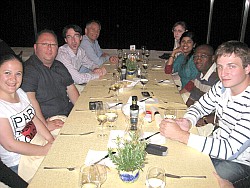
The International Scientific Advisory Committee (ISAC) met for dinner to discuss ways in which the meeting could be improved in 2014, when it is planning to reconvene. It was agreed that more emphasis ought to be given to the socio-economic aspects as well as to early warning systems and recovery. The quality of the presentations continues to improve and this is the main reason for the success of the conference. The ISAC’s work in reviewing abstracts and papers is of primary importance in this regard. Several new members were nominated for the ISAC amongst those that gave the best presentations. Another topic of discussion was where to hold the 2014 conference and the general agreement was for it to reconvene in Europe.
Book Launch
The conference offered a platform for the pre-launching of the book by Daniela Molinari that is shortly to be published by WIT Press. Its title is ‘Flood Early Warning Systems Performance’ (ISBN 978-1-84564-688-2). The book describes previous Early Warning Systems and explains why they failed to perform. It starts by identifying the components functions, the possibilities and weak points of EWS. It then evaluates their purpose and effectiveness. The contents are especially relevant to the case of flood risk in mountainous regions. Further information about this important new publication can be obtained from WIT Press (
Close of the Conference
At the end of the conference Professor Hashimoto showed a video of the Great East Japanese Earthquake which caused unprecedented damage. The event has left major valuable lessons for future generations.
The conference was closed by Carlos who referred to the importance of the conference series as a way of achieving the Institute’s objectives, ie the dissemination of knowledge at an international level. He also detailed other activities of WIT, some of them taking place at the New Forest Campus. WIT – Carlos said – welcomes collaboration with other Institutions and is open to suggestions for joint research and PhD training purposes. He ended by inviting the delegates to visit the Campus next time they are in the region to better understand the aims of the Institute.
Conference Proceedings
The proceedings of FRIAR, 284pp (Print ISBN: 978-1-84564-588-5; eISBN: 978-1-84564-589-2) are available from WIT Press. Orders can be placed on the WIT Press web site at www.witpress.com or by email:Papers from the conference will also be hosted online at the WIT eLibrary as Volume 159 of WIT Transactions on Ecology and the Environment (ISSN: 1746-448X, Digital ISSN 1743-3541). For more details visit the WIT eLibrary at http://library.witpress.com

 Wessex Institute
Wessex Institute